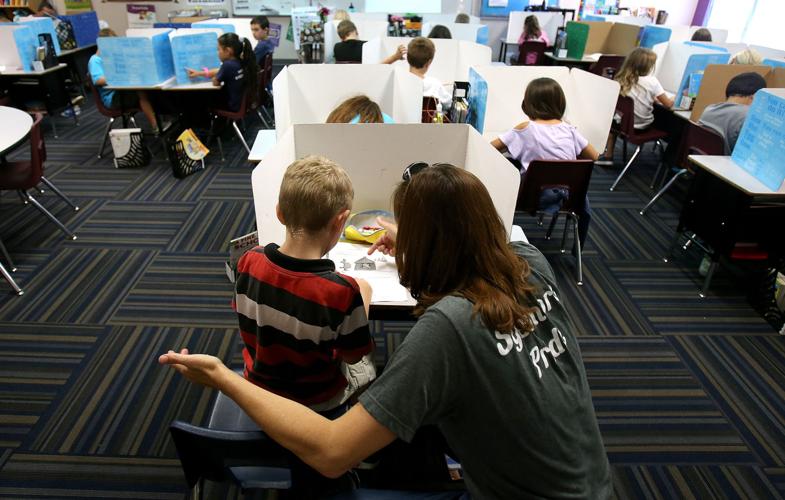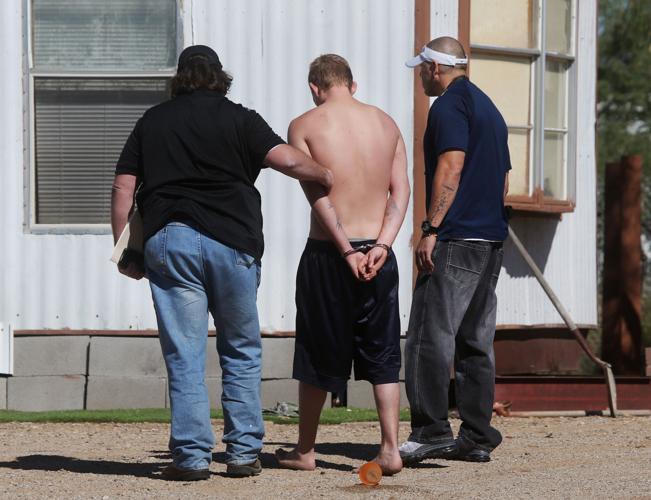The Tucson area has a long way to go before it can call itself sustainable, a new report says.
The report, prepared by a United Nations-related group, ranked Tucson as the 57th most-sustainable city among the country’s 100 most populous metro areas. To this report, sustainability means pursuing economic, social and environmental development at the same time in order to improve quality of life, economic opportunity and environmental management.
The metro areas were rated on 49 indicators of environmental and economic health, public health, educational quality and achievement, and crime, among other things.
The Tucson area had a sustainability score of 43.36 out of a possible 100, with low ratings in jobs, crime and education particularly dragging down its performance.
Here is a link to the full report:
http://unsdsn.org/wp-content/uploads/2017/08/US-Cities-SDG-Index-2017.pdf
Tucson is far from alone in its low sustainability rankings. The highest ranking metro area, centered in San Jose, California, scored only 61.04. This shows that all U.S. cities have far to go to meet the U.N.’s sustainable development goals, the report said.
The report’s author was the Sustainable Development Solutions Network, a nonprofit group operating under the U.N. Secretary General’s Office. It ranked cities in how they meet 16 sustainable development goals that were adopted in 2015 by 192 countries, including the United States.
The Tucson area fared well in some environmental indicators, including a broad category of sustainability and in releases of toxic chemicals into air and water, where it ranked in the top 10 metro areas nationally.
It also did well in open-space preservation and in the percentage of commuters who walk and bike to work, and placed well above average in public health. It did well in some economic categories such as affordable housing and in the percentage of families who have to spend more than 30 percent of their income on rents or mortgages.
But this region bombed on several broader economic rankings, including poverty levels and a category called “decent work and economic growth.” It did particularly badly with children in poverty. The region also fared poorly in education and crime standings and didn’t do particularly well in climate-change indicators.
The Tucson area ran behind most other Southwestern metro areas in dealing with many of these concerns, the report shows.
Of 21 Southwestern metro areas from southern and central California to south Texas, the Tucson area beat only El Paso, Riverside-Ontario-San Bernardino and Bakersfield. But numerous other cities in this region fared only a little better. Overall, the Southwest had the country’s worst poverty rates, the report said.
The Phoenix-Scottsdale-Mesa area ranked 43rd. Albuquerque, with which Tucson is often compared, ranked 53rd, four spots better than Tucson.
Seven of the top 10 ranked metro areas nationally lie on the two coasts, where environmental protection and other sustainability measures helped them overcome their generally unaffordable housing. The Deep South and the Upper Midwest accounted for all the bottom 10 cities. Baton Rouge, Louisiana, fared worst with a score of barely 30 out of 100.
The report based many of its rankings on data from federal agencies, including the Census Bureau, the Centers for Disease Control and Prevention, the U.S. Bureau of Economic Analysis, the Environmental Protection Agency, the FBI, the Bureau of Labor Statistics and the Federal Aviation Administration. It also got data from Columbia and Harvard universities, the Georgetown Law School Climate Center and the University of Michigan and the Brookings Institution think tank.
Some specific Tucson area rankings:
Poverty. In 2014, nearly 21 percent of all area residents lived below the poverty line and the area’s per person income was $35,749. The city ranked 94th in the poverty category.
Work opportunities and economic growth. From 2011 through 2016, the area had the fifth-lowest economic growth rate. More than 16 percent of the Tucson area’s youths were rated in 2013 as “disconnected,” meaning they weren’t employed, in school or getting job training. The area ranked 91st in the overall economic growth category.
Crime. Tucson ranked 11th worst in a category called “Peace, justice and strong institutions” that was based on nationally gathered crime statistics from 2014. It had the third-highest rate of gun violence that year at about 16 incidents per 100,000 people. It ranked 21st from the bottom in homicide victims, with about 15 per 100,000 people. It ranked 23rd from the bottom in overall violent crimes, with about 865 per 100,000 people.
Quality education. Tucson placed sixth best in 2014 for school enrollment. The same year, it tied for the 13th worst high school dropout rate, and ranked 64th in people over 25 with at least an undergraduate degree.
Climate action. The Tucson area ranked 30th nationally with 18.27 tons of carbon dioxide emissions per person in 2014. About 10 percent of all energy used in the state came from renewable sources, excluding nuclear energy, from 2011 through 2016, placing the Tucson and Phoenix areas in a tie for 54th.
Overall sustainability. About 4 percent of area residents walked or biked to work in 2014, the country’s fourth-best ranking. The area ranked 32nd in taking transit to work in 2014 — nearly 6 percent of all commuters. The average drive to work was 49th longest in 2015 at 23.4 minutes. Its rankings in ozone and fine-particle levels were at best average. Only 7.9 percent of area residents lived within a 15-minute walk of a public park in 2013, the 12th-worst ranking.
The area ranked 21st in affordable housing in 2014, based on the median per-square-foot home value divided by median household income. About 42 percent of homeowners paid more than 30 percent of their income on their mortgage, putting the area 16th best nationally. About 10 percent of renters were in the same boat that year, putting Tucson 20th.
Tucson’s overall ranking was fifth in this category, called “Sustainable cities and communities.”
Toxic releases. Tucson ranked third nationally due to a very low level of releases of toxic chemicals to the land, air and water per square mile in 2014. That’s probably due to our lack of industry.
Here is a link to the full report: http://unsdsn.org/wp-content/uploads/2017/08/US-Cities-SDG-Index-2017.pdf
Here's a link to a Web page that allows you to link to the report's underlying data: http://unsdsn.org/resources/publications/us-cities-sdg-index/







